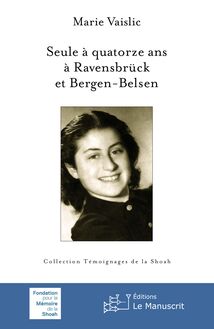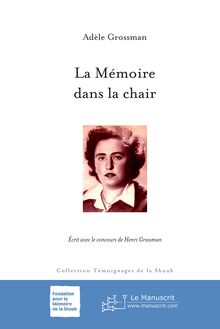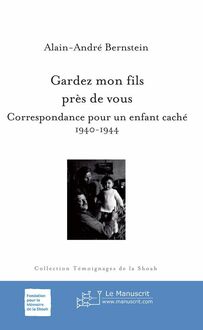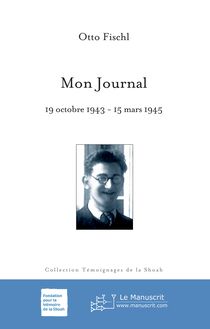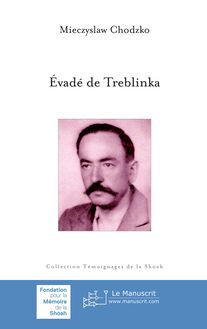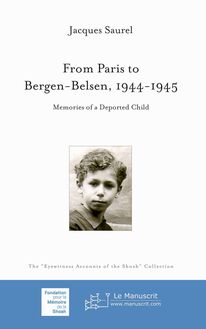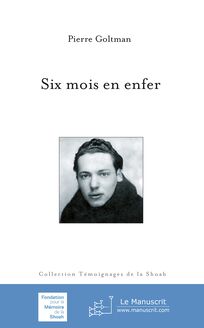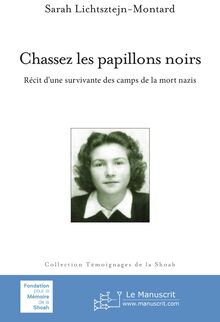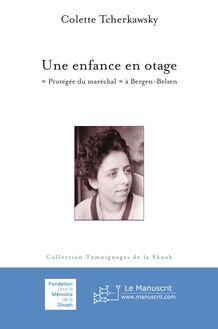-
 Univers
Univers
-
 Ebooks
Ebooks
-
 Livres audio
Livres audio
-
 Presse
Presse
-
 Podcasts
Podcasts
-
 BD
BD
-
 Documents
Documents
-
- Cours
- Révisions
- Ressources pédagogiques
- Sciences de l’éducation
- Manuels scolaires
- Langues
- Travaux de classe
- Annales de BEP
- Etudes supérieures
- Maternelle et primaire
- Fiches de lecture
- Orientation scolaire
- Méthodologie
- Corrigés de devoir
- Annales d’examens et concours
- Annales du bac
- Annales du brevet
- Rapports de stage
La lecture à portée de main
Vous pourrez modifier la taille du texte de cet ouvrage
Découvre YouScribe en t'inscrivant gratuitement
Je m'inscrisDécouvre YouScribe en t'inscrivant gratuitement
Je m'inscrisEn savoir plus
Vous pourrez modifier la taille du texte de cet ouvrage
En savoir plus

Description
Sujets
Informations
| Publié par | Éditions Le Manuscrit |
| Date de parution | 01 janvier 2020 |
| Nombre de lectures | 0 |
| EAN13 | 9782304045031 |
| Langue | English |
| Poids de l'ouvrage | 1 Mo |
Informations légales : prix de location à la page 0,0250€. Cette information est donnée uniquement à titre indicatif conformément à la législation en vigueur.
Extrait
Sarah Lichtsztejn-Montar
Dismiss the Black Butterflies The story of a Nazis death camps survivor
Preface by Serge Klarsfeld Postscript by Carol Mann Translation from the French: Isabel Wolff-Perry
the “eyewitness accounts of the shoah” collection
Le Manuscrit
© Éditions Le Manuscrit, 2019
EAN : 9782304045031
Sarah Lichtsztejn Montard
“Eyewitness accounts of the Shoah” a series published for the Fondation pour la Mémoire de la Shoah, Paris (Foundation for the Memory of the Shoah)
With its “Eyewitness Accounts of the Shoah” published in association with Editions Le Manuscrit using the latest communication technology, the Foundation seeks to preserve for a wide readership the memory of victims and witnesses of the dark years of anti-Semitic persecution from 1933 to 1945.
In addition to the many works already published else-where, the Foundation hopes in this way to present the stories of those men and women whose voices have remained u nheard until now: reminiscences often buried deep inside individual or family memories, stories sometimes written down but never published, accounts that were published at the time of leaving the hell of the camps, only to remain for too long hidden away on library shelves.
If one person alone cannot describe the unspeakable, this multiplicity of accounts may at least get close.
At any rate, that is the aim this collection has set itself with the moral and historical support of the Foundation, thanks to its editorial board of scholars and eyewitnesses.
Confronted with the manner in which present-day conflicts may be exploited to obscure, distort and trivialize the reality of the Shoah, this collection will enable readers, researchers and students to gauge the specific nature of persecution in its most extreme form – a persecution in which some were actors, others accomplices, and to which some people remained indifferent while others were truly heroic.
It is our wish that these works may encourage a spirit of fraternity in moving readers to counter anti-Semitism and all other forms of exclusion.
Visit the Internet site of the Foundation of the Memory of the Shoah: www.fondationshoah.org
Editorial Board for the Collection
Serge Klarsfeld, president
Henri Borlant, deportation survivor
Isabelle Choko, deportation survivor
Olivier Coquard, historian
Katy Hazan (OSE), historian
Dominique Missika, historian
Denis Peschanski, historian
Paul Schaffer, deportation survivor
Annette Zaidman, hidden child
Philippe Weyl, head of the collection
For other titles in the collection.
Biography of Sarah Montard born Lichtsztejn
1928 March 16 th: Birth of Sarah Lichtsztejn in the free city of Dantzig (currently Gdansk, Poland). Her mother, Marjem/Maria, born Korenbaum, was born in 1904 in Maloryta, near Brest-Litovsk (currently Brest, Belarus) into a practising Jewish family of eight children. She was a dressmaker. Sarah’s father, Moyshé-Haïm/Moïse, was born in 1903 in Lachwa, near Pinsk (Polesia, Belarus), into an Orthodox Jewish family. A freethinker, he became a Yiddish journalist and teacher. Sarah’s parents were married in 1927. They were both anarchists.
1930 The family settles down in the 15th district of Paris.
1932 The family moves to rue Piat, in the 20th district of Paris.
1939 July: Sarah takes and passes the examination required to go to secondary school (eleven +).
August 23rd: signature of the non-aggression pact between the Germans and the Soviets.
September 3rd: France and the United Kingdom declare war on Germany which had invaded Poland two days prior. Beginning of WWII in Europe.
Moïse, Sarah’s father, is mobilized in the Polish Army. He joins the barracks of Parthenay (Deux-Sèvres department).
October: Sarah goes back to school at the girls’ high school, Cours de Vincennes, in the 20th district of Paris.
1940 January: Sarah & her first cousins are sent to an Πuvre de Secours aux Enfants (OSE) home, called La Feuilleraie, in Boulouris, on the Riviera.
May 10th: end of the “odd war”, beginning of the “blitzkrieg”. The Germans attack Belgium, the Netherlands and Luxembourg by surprise, in order to skirt around the French defence line called Maginot and invade France.
June 22nd: the Armistice treaty between France and Germany is signed in Rethondes. Two-fifths of the French territories are occupied by the Nazi Armies.
July 10th: in Vichy, the Assemblée nationale (deputees and senators united) vote full powers to Marshall Pétain. The French State replaces the Third Republic. Pétain starts his “National Revolution” (which is reactionary, xenophobic, anti-Semitic and anti-communist).
July 30 th: a demarcation line separates the zone known as “free” and ruled over from Vichy, down South, from the zone under German occupation in the North and West of France.
Early July: Sarah passes her Certificat d’études .
Maria, Sarah’s mother, goes to fetch her daughter at the Riviera. They get back to Paris by crossing the demarcation line in Chalon-sur-Saône.
September: Sarah’s father is demobilized.
October 3rd and 4th: the Vichy government releases discriminatory anti-Jewish laws; first Jewish status.
1941 June 2nd: second Jewish status.
July 23rd: Sarah’s father is imprisoned at the Pithiviers (Loiret department) camp, after being arrested in a Paris street.
September 2nd: he escapes; acquires fake ID and hides in Paris until the Liberation.
1942 June 7th: effective date of the obligation, for all Jews above the age of 6 and living in the occupied zone, to wear the yellow star.
July 16th: first day of the raid, known as Vél’ d’Hiv’ , in Paris and the surrounding area: Sarah and her mother are arrested at home and brought to the velodrome. In the evening they manage to escape, one after the other. They go underground using fake identification papers.
November 11th: the German Armies invade the area known as the free zone, three days after the landing of the Allies in northern Africa.
1943 February 2nd: German General Friedrich Paulus surrenders in Stalingrad: first major military defeat of the Nazis.
1944 May 24th: Sarah and her mother are arrested at their home, due to an anonymous denunciation. They spend the night in the cells of the Île-de-la-Cité.
May 25th: they are imprisoned at the Jewish camp of Drancy (currently in the Seine-Saint-Denis department).
May 30th: they are part of convoy number 75 to the extermination camp of Auschwitz II-Birkenau (High-Silesia, Poland).
Sarah and her mother are tattooed and placed in quarantine before being transferred to the labour camp of Birkenau, in an Aussenkommando (external commando).
From the end of October 1944 to January 18th 1945, Sarah, separated from her mother who had stayed in Birkenau, works in Auschwitz-I where she benefits from “better” conditions. She first works in a farm with Hungarian women, then digs canals with Ukrainian women.
1945 January 18th : departure from Auschwitz, for the “death march”. Sarah is reunited with her mother who is in the line of deportees. They walk for three days before being packed into an open coal wagon. It will run for five days and five nights, stopping only at the station of Buchenwald (close to Weimar, currently in Thuringe, Germany), where the refugees are given some soup. They arrive at the camp of Bergen-Belsen (currently in Lower Saxony, Germany) on foot. Food is scarce and they have to cohabit with rats and lice. Sarah meets Anne Frank shortly before her death.
March 16th: on her seventeenth birthday Sarah catches typhus. Her mother manages to save her, and two of her friends, by stealing hot water.
April 15th: liberation of the Bergen-Belsen camp by the First British Army.
The camp is set on fire in order to stop the typhus epidemic and Sarah and her mother are transferred to Belsen.
May 8th and 9th: end of World War II in Europe.
May: crossing of northern Germany westward, by lorry. After two weeks spent in a transition camp, back to cattle wagons, towards the Franco-Belgium border, then in passenger carriages to Paris Gare-du-Nord where they arrive on the 24 th, a year to the day after their arrest.
Sarah sees her father again (he no longer lives with her and her mother).
October: Sarah enters the 7th form (sixth grade), in her former high school.
1946 February: she passes the first part of the baccalauréat (school-leaving certificate), through a special session (without oral exam).
Exhausted, Sarah goes to rest in Alboussières (Ardèche department) for two months.
October: she joins her schoolmates again, in philosophy class. She fails the second part of her baccalauréat.
1947 October: Sarah registers at the Cours des Maraîc-hers, intended for pupils who have fallen behind with their studies because of the war. There, she meets Philippe Montard, her future husband.
1948 After passing the second part of her baccalauréat Sarah registers at the Sorbonne.
1948-1950
Sarah is part of a small puppeteer company, Hakl-Bakl, which puts on stage shows in Yiddish, in Parisian theatres as well as on tours.
1952 November 15th: Sarah marries Philippe Montard at the town hall of the 13th district of Paris.
1952-1956
Sarah works f
-
 Univers
Univers
-
 Ebooks
Ebooks
-
 Livres audio
Livres audio
-
 Presse
Presse
-
 Podcasts
Podcasts
-
 BD
BD
-
 Documents
Documents
-
Jeunesse
-
Littérature
-
Ressources professionnelles
-
Santé et bien-être
-
Savoirs
-
Education
-
Loisirs et hobbies
-
Art, musique et cinéma
-
Actualité et débat de société
-
Jeunesse
-
Littérature
-
Ressources professionnelles
-
Santé et bien-être
-
Savoirs
-
Education
-
Loisirs et hobbies
-
Art, musique et cinéma
-
Actualité et débat de société
-
Actualités
-
Lifestyle
-
Presse jeunesse
-
Presse professionnelle
-
Pratique
-
Presse sportive
-
Presse internationale
-
Culture & Médias
-
Action et Aventures
-
Science-fiction et Fantasy
-
Société
-
Jeunesse
-
Littérature
-
Ressources professionnelles
-
Santé et bien-être
-
Savoirs
-
Education
-
Loisirs et hobbies
-
Art, musique et cinéma
-
Actualité et débat de société
- Cours
- Révisions
- Ressources pédagogiques
- Sciences de l’éducation
- Manuels scolaires
- Langues
- Travaux de classe
- Annales de BEP
- Etudes supérieures
- Maternelle et primaire
- Fiches de lecture
- Orientation scolaire
- Méthodologie
- Corrigés de devoir
- Annales d’examens et concours
- Annales du bac
- Annales du brevet
- Rapports de stage
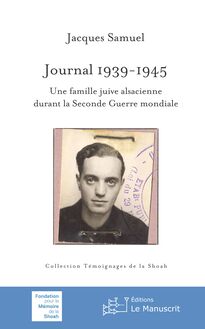
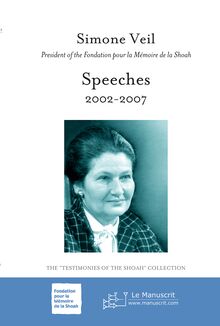
![[En]quête de famille](https://img.uscri.be/pth/2d18ccf0814431f0b2cebbf9d26faf0e9ab5ea36)
